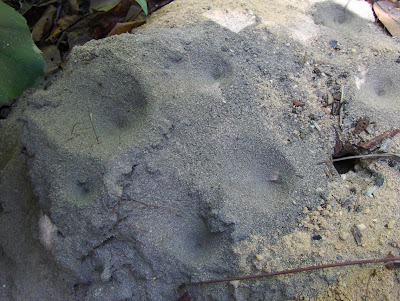
Hang on folks! Don't click on that "inappropriate material" button provided by your blogger company. This isn't jungle porn. It's only part of tropical biodiversity in the world of trees. As explained in the previous post, the muiratinga trees lose their branches, much like plants, i.e., the branches disconnect themselves from the trunk of the tree taking with them the nodule that for the world takes on the image of a penis. Obviously, mankind makes of it what they want, including stories, legends, jokes and even porn. When I came to Santarem in 1979, I remember it was quite common for local folks to present me with the muiratinga oddity, in great jest of course. The local name is
caruara, which
comes from the Indian language
. Strange enough, I haven't been able to find reference to this word anywhere on the internet or in my library. As a matter of fact, there is almost nothing on the topic. The only reference I found was a book of Indigenous stories written by Betty Mindlin, called
Barbecued Husbands And Other Stories from the Amazon. The excerpt from the book is explicit enough that I need not say anything else. Only that the word
muiratinga means "the white tree". At least that's the best translation I could concoct from the words
muira (tree or wood) and
tinga (white). A word about the image: the tree is muiratinga, from which the branch fell.

 Iris germanica (lower image) is blooming again. This is the flower that some people call an orchid, which it isn't of course. Strange enough, a yellow variety (top image) bloomed too and from the same vase. It's the first time that I've seen this one.
Iris germanica (lower image) is blooming again. This is the flower that some people call an orchid, which it isn't of course. Strange enough, a yellow variety (top image) bloomed too and from the same vase. It's the first time that I've seen this one.















































